Was death of Wall Street wiz an accident, suicide or murder?
Produced by Josh Yager, Doug Longhini, Ana Real, Shoshanah Wolfson and Tamara Weitzman
[This story previously aired on July 25, 2015. It was updated on Feb. 10, 2018.]
Ann Bender his lived under a cloud of suspicion since 2010, when her husband John was shot to death in the Costa Rican rain forest. In 2015, she went to prison for murder, but now says total vindication is so close she can taste it.
“I’ve been waiting a long time for this, she told “48 Hours” correspondent Susan Spencer.
It was in 2001 that the Benders moved to a remote corner of Central America to live an extravagant, idyllic dream.
Their home, called Boracayan, which rises from the middle of the Costa Rican rain forest, was once Ann and John Bender’s vision of paradise.
The phrase “over the top” doesn’t begin to do the house justice. It’s like some bizarre combination of Disneyland and art museum and something you’d really only see in a James Bond movie.
“Does this strike you as astonishing every time you’re here or are you totally used to it?” “48 Hours” correspondent Susan Spencer asked Ann Bender as they walked through the home.
“I’m used to it by now. It’s home,” Ann replied.
The main house at Boracayan is four floors tall and nearly 50,000 square feet, with tons of gleaming granite and no windows or walls.
“I think that’s one of the things I miss the most … it’s the sounds of the birds,” Ann said. “We built the house … to our taste, which is crazy.”
John and Ann always had been a bit eccentric, from the moment a friend introduced them in Virginia in 1998. “It was love at first sight for both of us,” she told Spencer.
The daughter of an international banker, Ann had grown up all over the world. John was smitten and proposed after just two weeks. They married the next year.
“We both found in each other a future,” said Ann.
John and Ann Bender with a pet sloth at their home deep in the Costa Rican jungle
Gigi Patton
They shared many interests and one unfortunate problem: both struggled with depression — specifically in Ann’s case, with bipolar mood disorder.
“I had just been diagnosed … with bipolarity,” Ann said.
The Benders’ friend, Pete Delisi, said John hated doctors and preferred to privately deal with his problems.
“He could go from being extremely happy to extremely sad very quick,” said Delisi, adding that what Bender lacked in happiness, he made up for in smarts.
“He was absolutely a genius…”he said.
John Bender had been a math and science whiz in high school and then studied physics at the University of Pennsylvania. His looks got him work as a male model and his smarts helped him beat the odds at the local casinos. He had an unusual talent for making money — a talent that blossomed at the Philadelphia Stock Exchange.
“In just about five minutes, he developed a way of trading options that had never been done before,” Ann said, “and within just a few years, he was one of the top traders.”
“By the time he was 25, I think he’d amassed about $80 million,” said Delisi.
According to reporter and CBS News consultant Ned Zeman, Bender ran a half-billion dollar hedge fund by his early 30s.
Zeman said that by 1998, John Bender was looking for both a safe haven for his money and a purpose for his life. And that for all his brilliance – and his bank balance – he’d never really fit in with the Wall Street crowd.
“He just walks away from it,” Spencer noted.
“Just walked away,” Delisi replied.
But not without a plan: John and Ann, both animal lovers, decided to use their fortune to start a refuge for wildlife. In the dense rain forest of Costa Rica they found the ideal location: 5,000 pristine acres they named Boracayan, after a native plant.
“I mean this is as out there as you can get…” said Zeman.
Setting up a sanctuary for wildlife gave the Benders a sanctuary too, an escape to an extravagant, private universe of exotic flowers, animals and waterfalls. Here, nothing was ordinary — not even the lights in the house. Many of the approximately 400 lamps were custom made of stained glass.
Ann said John thought the lamps would brighten her outlook on the world.
“Depression was an immense bond between them … it’s a very isolating disease. And people tend to pull away from society,” Zeman explained.

21 Photos
John and Ann Bender’s life in paradise
A look at the life the couple created at Boracayan — their nature reserve deep in the Costa Rican jungle
Although construction of the house brought in running water, reliable electricity and dozens of jobs to the area, the project — and the Benders — got a chilly reception.
“There was definitely a degree of, ‘who are these rich gringos and who the hell do they think they are coming down and doing all of this,'” Ann recalled.
Then, in April 2001, Ann said armed men in an unmarked car forced them onto the shoulder of a mountain road. The men claimed to be police, but wore no uniforms.
“I thought it was a kidnapping,” she said.
One of the men pulled John from his car and when he protested, “This guy fired the gun between John’s legs and held up the gun to John’s head,” Ann told Spencer. “I was terrified.”
All this, it would turn out, was just so Costa Rican authorities could serve John Bender with papers naming him in a lawsuit stemming from his days on Wall Street. But John spent six hours in police detention before he knew that, and Ann says the incident completely unnerved him.
“That’s when our entire lives changed,” she said.
Ann said an attempted break-in at the house months later only made things worse. The couple bought guns, hired guards and turned the refuge into a virtual fortress. They lived in fear.
“It makes me very sad to think back on how painful life could be for him,” Ann said in tears.
In 2005, perhaps trying to right the ship, Bender set up a $70 million trust to manage the refuge and provide for Ann’s living expenses. He named attorney Juan de Dios Alvarez to run it. Alvarez was then a trusted advisor. Later, Ann would point to him as a key figure in the events surrounding John’s death.
But neither the trust nor the guards nor the guns stopped the couple’s continuing slide into depression. Ann said John saw a psychiatrist, but refused antidepressants. She, however, was taking an enormous amount of medication. By the fall of 2009, Ann said she’d all but stopped eating.
“I was 40 pounds lighter than I am now,” she told Spencer.
By the next year, they had become prisoners in their own paradise. The natural beauty that brought them here, lost in irrational despair. Ann said John became convinced that every problem — her illness, even the death of a beloved pet bird — was his fault.
The stage was set.
“He became… suicidally depressed,” Ann said. “He wanted to die.”
THE DEATH OF JOHN BENDER
“I’m sure this seems as real to you as it did that night,” Spencer said to Ann Bender, standing in the room where her husband died. “So what happened?”
“John brought a gun to bed,” she replied.
It was Jan. 7, 2010. “I opened my eyes and I saw the outline of the trigger of the gun … and he had it pointed at his head … at himself…” she said.
Horrified, Ann said she recognized their 9mm Ruger pistol.
“From what I could tell he was holding it with both hands,” she said.
“And what’d you do?” Spencer asked.
“I got up on my knees and reared towards him and I tried to grab the gun,” said Ann.
“Were you able to get it?”
“No. I was able to get my hands around his and the gun slipped and it went off,” she replied.
Just minutes later, their security guard, Oswaldo Aguilar, was first on the scene.
“She said to me, ‘I tried to stop him and I couldn’t do it,'” he told “48 Hours.”
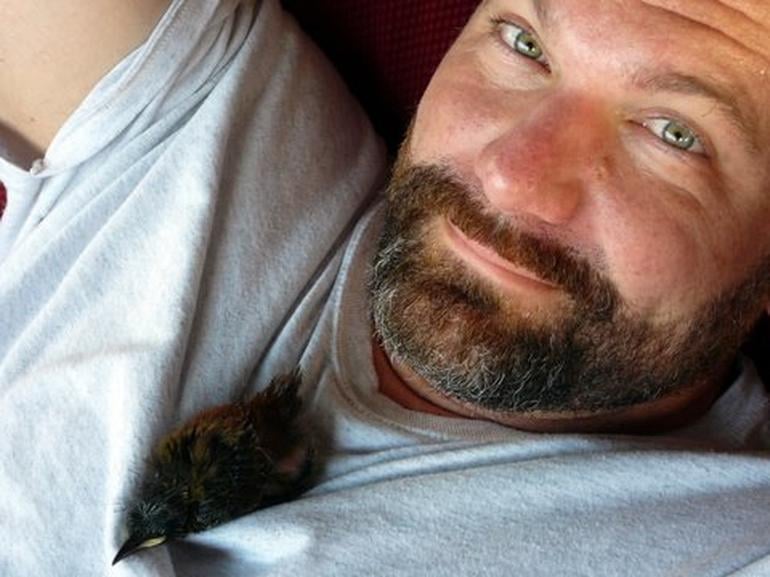
John Bender with one of his pet birds at Boracayan
Bender family
Asked if there was a long struggle, an emotional Ann told Spencer, “No … I remember it as being instantaneous. It couldn’t have been any more than two seconds.”
“When it went off, who was holding it?” Spencer asked of the gun.
“I don’t think anyone was holding it,” Ann replied.
“How does a gun go off when no one’s holding it?” Spencer pressed.
“I think that it fell. He dropped it,” Ann said. “I never touched the gun.”
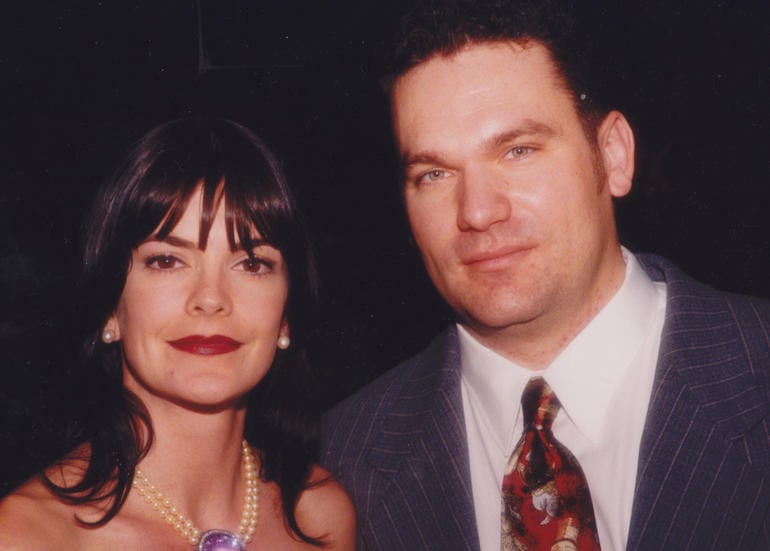
Ann and John Bender
Ann told roughly the same story to the first responders who arrived at Boracayan some two hours later. But reporter Ned Zeman says that their examination of the scene actually raised more questions than it answered.
“Why does somebody who’s suicidal shoot himself back here,” Zeman asked, pointing to the back of his head. “They said, first of all, John was left-handed … and how does a left-handed person, lying in bed, shoot himself here?”
Prosecutor Edgar Ramirez has a simple answer: he doesn’t.
“If somebody wanted to commit suicide, he says, the way they do it is here, here or here,” Ramirez said, pointing to inside mouth, under his chin and against his temple.
But if a left-handed person did fatally shoot himself behind the right ear, the gun presumably would end up on the same side as the bullet hole.
“Just to be clear, the gun is on the opposite side from the wound?” Spencer asked Zeman.
“Yes, the wound is on this side of John’s head,” he replied, pointing to his right.”He is lying on his back. The gun is over there on this side of the bed, near his arm. So you know that doesn’t look good,” he explained, pointing to the left.
“There were no lights on. All I knew is he had a gun and I tried to get it away from him and I couldn’t and it went off,” Ann cried.
But investigators were puzzled over the bullet’s path, entering just below the right ear and ending up behind the left eye. Also odd was the location of a spent cartridge found some 15 feet behind the bed — all, they thought, inconsistent with Ann’s story of a struggle.
“Did you move anything, touch anything, change anything in that room?” Spencer asked Ann.
“The only thing I remember doing is using the radio, unlocking the elevator and touching John,” she replied.
“But as far as the gun?”
“No.”
“The shell casings?”
“I don’t remember,” Ann replied.
“The pillow …”
“I don’t remember anything,” said Ann.
A pillow near John’s head had a tear with gunpowder in it.
“…which means the pillow was positioned over his head and the gun was fired,” Prosecutor Ramirez told “48 Hours”.
Within hours, investigators began to think John Bender may have been shot in his sleep and died where he lay. There were pools of blood on both sides of his body and the earplugs he always wore were still in place.
“Starting from the fourth floor down … we started looking,” said police inspector Louis Aguilar, who led a sweep of the house and quickly discovered something that stopped him cold. “We found a great amount of jewels … precious stones.”
There were thousands of gems — diamonds, rubies and opals — some on display, others in suitcases and worth roughly $20 million.
“But when — when you talk about the jewelry collection, you know, I have jewelry. I don’t think that’s what you’re talking about,” Spencer remarked.
“No. No,” Ann laughed. “No. In no way, shape, or form.”
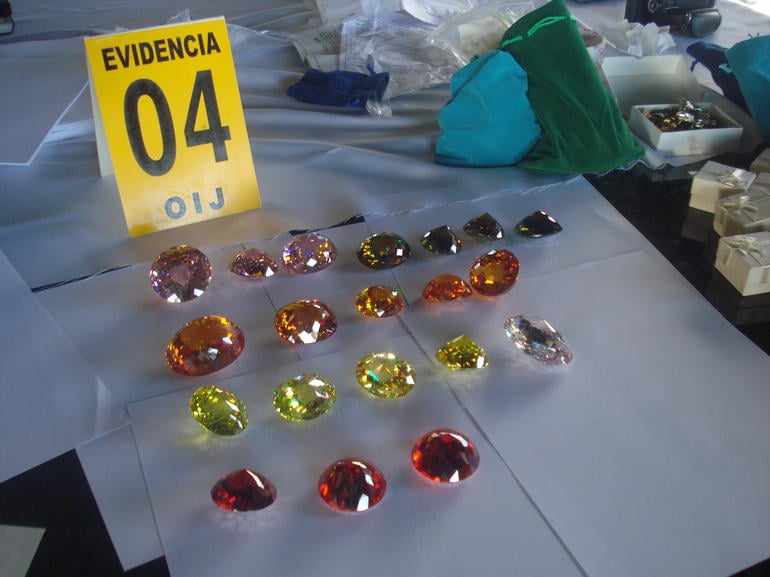
Some of the more than $20 million worth of gems police found at the home of John and Ann Bender
Fabio Oconitrillo
Investigators didn’t see it as a jewelry collection, either. To them it looked a lot more like a smuggling operation.
“Do you think … that when the police got here they find all these amazing jewels … do you think that it prejudiced them?” Spencer asked Ann.
“So what?” she replied. “Strange doesn’t mean that you’re a criminal.”
Ann says the gems were merely a hobby and an investment, and says she did her best to cooperate that night.
“I was falling to pieces,” she said, her voice breaking.
Within hours of John’s death, after calling her family and Juan Alvarez, the trustee of Boracayan, Ann was rushed to the hospital. She was emaciated and covered with sores.
“I went into some sort of shock mode,” she said. “My understanding is they were giving me a 40-percent chance of survival for the first two weeks.”
Ann’s psychiatrist, Dr. Carlos Lizano, who she authorized to speak with “48 Hours,” met her in intensive care just hours later.
Asked if Ann was in touch with reality, Dr. Lizano said she was “in and out.”
“Do you think she was even physically capable of doing what the prosecution alleged?” Spencer asked.
“No,” Lizano replied. “Ann could not even hold a fork when she was here.”
Ann Bender would remain hospitalized for seven months under Lizano’s care and under a growing cloud of suspicion.
“They were beginning to say, ‘This doesn’t look like an accident. This doesn’t look like a suicide. This looks a lot like a murder.’ And they began looking at her as a suspect,” said Zeman.
“Did you for one second, until it actually happened, think that you were gonna be charged?” Spencer asked Ann.
“No,” she replied.
EXAMINING THE FORENSICS
The Benders’ friend, Paul Meyer, visited Ann in the hospital just days after her arrival. She weighed 84 pounds.
“She literally looked like someone who had just walked out of a concentration camp,” he said.
Sick or not, Ann Bender was already investigators’ number one murder suspect. Police confiscated her clothes and her computer. But it’s unclear if they examined John’s messages or ever saw these chilling excerpts, dated just weeks before he died:
“I wish I were f—-ing dead. I feel so f—ing horrible. I want to kill everyone and then myself.”
The messages were a window, Ann said, on a tormented soul.
“John was the … most tortured person I ever met,” she said. “He had been wanting to kill himself for weeks.”
Ann said the lawyers Bender trustee Juan Alvarez hired for her should have used John’s messages in her defense. They wouldn’t comment on strategy.
“They never manifested that I was innocent,” said Ann.
“So their position was, ‘Oh yeah…she did do this,” Spencer noted.
“By not doing anything … they were making it inevitable that I would be charged,” said Ann.
Nineteen months after John Bender died, Ann was officially charged with murder. Convinced the gems had been smuggled into the country, authorities later also charged her with possessing contraband.
She is sure it’s all just what Alvarez wanted. Why? To hide the fact, she claims, that he had siphoned money from the $70 million Bender trust.
“I’m the only person that can stop him … or bring scrutiny to what he’s done,” said Ann.
In July 2012, with murder charges hanging over her head, Ann took Alvarez to court for fraud. The suit claimed Alvarez used the Bender trust as his personal piggy bank, buying horses for his horse farm and paying his credit card bills. Authorities raided his office and confiscated 135 boxes of documents. The court then removed Alvarez as trustee.
“This investigation will go nowhere because the accusations are bogus,” he told “48 Hours.”
But whatever Juan Alvarez did or did not do, he did not shoot John Bender and prosecutors see Ann’s lawsuit as an attempt to distract them from their firm belief that she did.
“They just didn’t see how that gunshot could have been in that part of his head by suicide,” said Zeman.
Was this suicide, or an accident or murder?
The forensic evidence is so vital in this case, “48 Hours” brought in outside experts to Boracayan and asked them to take a look at it.
In the rarified world of forensic science, Selma and Richard Eikelenboom are internationally recognized, but sometimes controversial, experts known for stirring debate in high-profile cases once thought open-and-shut.
From the start, they say, some Costa Rican authorities had a preconceived idea that this was murder.
“The pathology report is very straight from the beginning, ‘This is a homicide… This is a homicide and let’s prove it’s a homicide,'” said Selma Eikelenboom.
“He does look like he’s sleeping,” Spencer noted.
“A lot of people who die with their eyes closed look like they’re sleeping and they might have been wide awake when it happened,” Selma replied.
“The prosecutor said, ‘If you’re going to shoot yourself … Everyone knows it’s here or it’s here or it’s here,” Spencer said, pointing to her mouth, under her chin and her temple.
“Well … that’s completely unscientific,” Selma replied. “If that’s an example of the logic they used in this case, then I’m really very worried…”
They cite other monumental mistakes: not immediately testing for gun powder residue, not fingerprinting the gun, not testing the sheets for blood spatter.
“What is the most vital thing that they missed?” Spencer asked.
“I think the trajectory … that you can place the shooter on the scene in relation to the victim,” said Selma Eikelenboom.
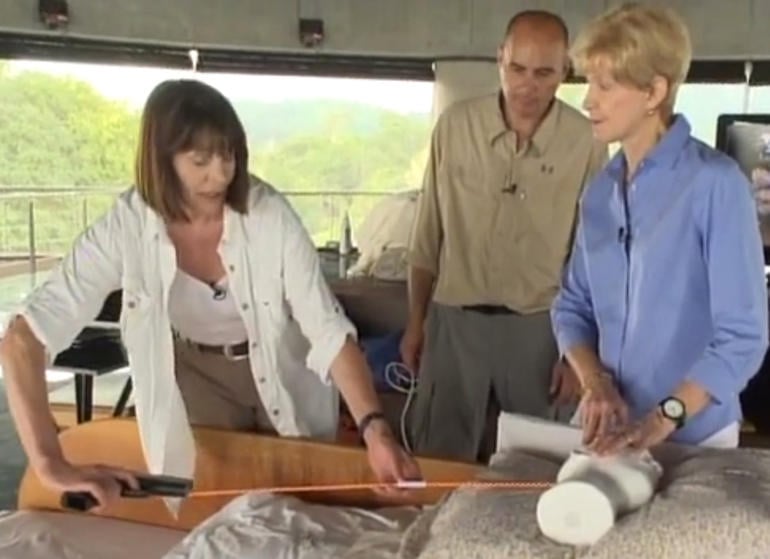
Forensic experts Selma and Richard Eikelenboom demonstrate how the trajectory — the path the bullet followed — was critical to understanding where the gun was when it was fired and who fired it.
CBS News
The Eikelenbooms told “48 Hours” the trajectory — the path the bullet followed — was critical to understanding where the gun was when it was fired and if Ann or John fired it.
“Looking at this investigation, how would you grade it?” Spencer asked Richard Eikelenboom.
“Very poor,” he replied.
In January 2013 a three-judge panel acquitted Ann Bender of murder. She was safe … but not for long.
SEARCHING FOR THE TRUTH
After her acquittal, Ann Bender hoped for a new start. She never thought of leaving Costa Rica, moving instead to a small apartment. When the trust stopped paying her bills, friends and family helped. She began dating a new boyfriend, another American, named Greg Fischer.
“She has never not done what this court system has asked her to do. Never not done what this government has asked her to do,” Fischer told “48 Hours.”
So, Ann says, she was shocked in May 2014, when the Costa Rican government put her on trial for murder a second time.
It may seem odd to Americans, but in Costa Rica there’s no double jeopardy rule. So if a prosecutor doesn’t like a verdict, he can appeal. And if he wins, can try the defendant all over again with the same charges, the same evidence and the same witnesses.
This time there are new judges, but prosecutors repeat their case — arguing that the evidence from the body, the bullet casing, the entry wound, blood stains and pillowcase prove this was murder.
Defense attorney Fabio Oconotrillo is just as insistent it was suicide.
“In all homicides there’s a reason. In this case there is no reason,” he told “48 Hours.”
And, in a risky move, he decides there’s nobody better able to make that point than Ann Bender herself.
“I want to make a statement,” Ann said in court.
And make a statement she certainly does.
“I was so happy here when we moved here,” she tearfully told the court.
Ann stayed on the stand all day.
“He was talking about suicide every day for at least four weeks,” Ann continued in court. “It was an issue of getting through every day.”
“You seem to be saying that there was no way to prevent him from attempting suicide” Spencer noted to Ann.
“I tried my hardest,” she replied.
“I’m not saying no way for you – there was no avenue open, period. This was destined to be,” said Spencer.
“No,” Ann said. “He wanted to die.”
In his testimony, security guard and first responder Oswaldo Aguilar described the scene, but he also raised questions about one of the prosecutor’s key assumptions.
“The main point of the evidence for the prosecution was John was left-handed. The bullet wound is behind the right side of his head. You’re lying in bed. How does a suicidal man possibly end up shooting himself like this,” said Ned Zeman.
Aguilar has an answer, pointing out that, although left-handed, John Bender carried his gun on the right side. But testifying for the prosecution, forensic pathologist Gretchen Flores doesn’t care if John Bender was right- or left-handed; she insists suicide is inconceivable.
Another person, she says, would have to fire the weapon.
Her conclusion from the blood evidence and the position of the body: John Bender never saw the shot coming.
At Boracayan, “48 Hours”‘ independent forensics experts Richard and Selma Eikelenboom tested that idea — that John’s body never moved.
“It would explain the blood we found over here… but doesn’t explain the blood over there,” said Richard Eikelenboom, pointing to different areas of the bed.
In their view, it had to have moved for the blood to have pooled as it did on both sides of his body.
“So his head was completely different,” Richard Eikelenboom said. “This was the position of his head when he was shot,” turning the mannequin head face down.
“The blood pattern analysis supports the hypothesis that there was some sort of fight,” said Selma Eikelenboom.
They showed “48 Hours” how a struggle could have happened, how Ann’s efforts to get the gun could make it fire and how John’s body then might have moved.
“Boom! It goes like this. And he starts bleeding,” said Richard Eikelenboom. “And he slowly falls back in this position.”
“Which accounts for the blood on this side,” said Spencer.
Back in court, Ann tearfully testified: “I lunged forward towards him with my hands. I fell towards the center of the bed … and the gun went off.”
But in an interview with “48 Hours,” Selma Eikelenboom said, “The hypothesis that he was shot in the position he was found is not supported by this evidence.
Also unlikely, the Eikelenbooms say, is the prosecutor’s theory that Ann shot her husband from behind the bed.
“This trajectory is not very likely,” said Selma Eikelenboom.
And they showed “48 Hours” why they think the odd location of the spent cartridge — such damning proof according to the prosecution — really proves nothing at all.
“The casing can end up in that position if the gun is twisted far enough around?” Spencer asked.
“Correct,” Richard Eikelenboom replied.
“There is no chance she murdered her husband,” Ann’s brother, Ken Patton, testified on day five of the trial.
Ann’s family and friends want to make sure the judges think so, too.
“If I thought Ann had anything to do with this, in any way, shape or form, I wouldn’t be here,” friend John Delisi told the court.
But for Ned Zeman, the case is no longer clear.
“So you can see a scenario … where it’s an accident … or it’s suicide … and where it might be murder?” Spencer asked Zeman. “You can see all of these?”
“Yes,” he replied. “Yes, I absolutely can and I think anybody who sat in that courtroom would probably say the same thing except for maybe Ann and her attorney, because — any of those make sense.”
In his closing, Prosecutor Ramirez insists there is only one plausible scenario: Ann Bender shot her husband.
“John Bender was killed by Ann,” he said in court.
Defense attorney Oconotrillo pleads for reason, saying Ann is not an assassin.
Facing a possible 25 years in prison, Ann herself has the last word.
“I did not kill John…” she sobbed in the courtroom.
But even after four years and two trials, she is unprepared for this verdict: guilty of murder.
Ann’s friends and family sit stunned. She is sentenced immediately to 22 years in prison and is led away.
Her boyfriend Greg Fischer is devastated.
“I don’t think she is gonna live,” he said. “I don’t think she’s gonna survive.”
“The reality that I could be here for 22 years. Have I accepted that? I don’t think there’s any way that I can,” said Ann.
A DRAMATIC TWIST
Immediately after being sentenced, Ann Bender appealed her conviction.
“There’s no evidence that proves beyond a reasonable doubt that I killed John. The evidence doesn’t exist,” she told Susan Spencer.
“48 Hours” met with Ann six weeks later in prison.
“I’m still surviving and I refuse to give up. I’m just not going to,” said Ann.
And giving up in this prison would be tempting; there are about 50 women per room, three toilets, no hot water.
“No privacy,” Spencer noted.
“None. Zero. Nada,” Ann replied.
And there’s no guarantee she won’t spend the rest of her life behind bars.
“How do you fight back from something like that in those surroundings?” Spencer wondered.
“You survive. You do what you gotta do,” said Ann.
Then, in the winter of 2015, after nine months in prison, there was a development almost as stunning as Ann’s conviction: she wins her appeal. The court annuls the verdict. Ann will have to face yet another trial, but she is released for now. She learns all this from a friendly guard.
“I said, ‘You’re kidding, I can leave?’ And she said, ‘Yeah. You’re free.’ And I fell to the ground completely. I just lost it,” said Ann.
But in this story, bad news seems always to follow the good. Ann soon learns she is not off the hook — prosecutors have decided to try her for a third time.
Her third trial begins about six months later. And not only is Ann physically more fragile than ever – she has suffered a major personal setback. Her boyfriend, Greg Fischer, died of an asthma attack while she was in prison.
But at this trial – there is no shortage of people to lean on. Ann’s parents and her best friend, Celine, are there.
“She’s the best human being I have ever met,” Celine told “48 Hours.”
“A lot of people that are close to me are very invested in my getting out of this,” said Ann.
John Bender’s old friend Pete Delisi has called in legal reinforcements, too — two lawyers from the United Kingdom and two from the United States. Paid by Ann, they’ll advise her local attorney and closely monitor the trial, making sure the judges know they’re watching.
Ann’s biggest challenge may be just holding herself together in court.
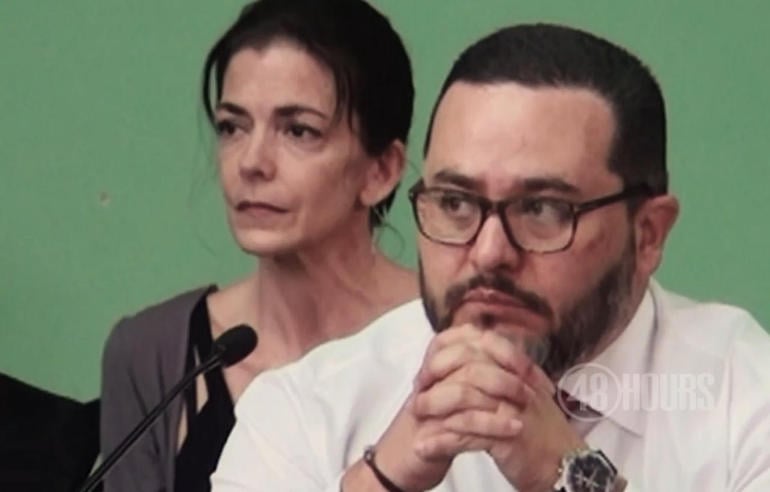
Ann Bender and her attorney in court during her third trial for the murder of her husband John Bender
CBS News
In contrast to her day-long testimony in previous trials, she is on the stand for only two hours. And this time, she tries to appeal to the judges by testifying in Spanish.
“He was talking about how he wanted to die, about suicide,” she testified.
Once again, telling her story is an emotional ordeal.
“He was talking about suicide every day to the point where he would practice how to kill himself,” she continued in tears.
Prosecutor Edgar Ramirez’ approach to this trial is much the same.
“…went to where the victim was sleeping and shot him with a single shot,” he told the court.
But he appears to be minus several key witnesses, including his star, Medical Examiner Gretchen Flores. She has mysteriously gone missing.
“…on a recuperative vacation, which is the information which I have from their office,” he explained.
Ann’s supporters call it an obvious delaying tactic.
“It’s part of the strategy to drag this out as long as they can so that everyone leaves,” Delisi told “48 Hours.”
But this time, team Bender has some star witnesses of its own.
“We’ve come here to participate in the truth finding…” said Selma Eikelenboom
Selma and Richard Eikelenboom are high-powered and controversial.
Ann’s lawyers hired the Dutch forensic experts after the Eikelenbooms completed their independent analysis for “48 Hours.”
But for the Eikelenbooms to testify, the Costa Rican judges must agree to make an exception and allow new witnesses.
“We don’t know if we can testify or not,” said Selma.
The prosecution strenuously objects.
The judges decide that Selma can testify; Richard cannot.
But the defense still can use him. He will be allowed to cross examine the state’s medical examiner Gretchen Flores has finally resurfaced after two weeks.
Richard Eikelenboom’s chance to directly question this witness is an opportunity, but also a big challenge. Flores is as certain as ever that Ann Bender killed John.
“We are not lawyers. So it’s a new role,” Selma Eikelenboom told “48 Hours.”
Costa Rican law prohibits American-style cross examination, in which lawyers use questions suggesting the answers they want. So Ann’s legal team quickly has to train this Dutch scientist to think like a Costa Rican attorney.
“We have absolutely a lot of work to do,” Selma Eikelenboom told “48 Hours”
To help Ann, Richard Eikelenboom will have to pointedly ask the medical examiner about her experiments without seeming to have an opinion either way.
After working all weekend the team is ready.
“Now we have to play ‘lawyer games,'” Richard Eikelenboom said as the team entered the courtroom.
Richard Eikelenboom [in court]: Do you know if this gun was tested for the distance of the missile flame?
Gretchen Flores: No sir, I don’t know.
Richard Eikelenboom to Judge: Am I allowed to show a picture?
Judge: Yes, go ahead.
Richard Eikelenboom has to tread carefully, and the constraints limit what he can accomplish.
But next, it’s Selma’s turn. She is a witness.
“I remember her walking in and the reactions of the judges just seeing her, because she has such an amazing presence in the courtroom,” said Ann.
And as a witness, Selma Eikelenboom can go much further.
“I see no support for the scenario of a homicide,” she testified.
“Her testimony was amazing,” Ann remarked.
“In my opinion as an expert all the evidence that is available points clearly in the direction of a suicide,” Selma Eikelenboom testified.
The prosecutor makes a last-ditch effort to strike Selma Eikelenboom’s testimony from the record. But for now, the judges decide it can stay.
“You can’t unring the bell. They heard what she said,” said Ann.
It’s been three long weeks. At last, they’re ready to vote on a verdict.
After three trials and nearly 10 years, Ann is found not guilty.
“The judges are looking at me … and I hear the words,” Ann told Spencer.
“‘Absuelta,'” said Ann. Which translates to absolved.
“The world believes me, finally,” she continued.
This time, Ann takes no chances. As soon as Costa Rican authorities return her passport, she flies home to the U.S. with no intention of ever going back to Costa Rica – regardless of what zealous prosecutors do.
“48 Hours” caught up with her in Washington D.C.
“I don’t see you flying down to Costa Rica for a fourth trial,” Spencer noted with a laugh.
“I don’t see it, either. Not a chance, no,” Ann replied.
Not so fast. In a jaw dropping decision months later – a Costa Rican court announces, yes, it intends to try Ann Bender a fourth time. Her stunned lawyers immediately appeal.
But win or lose, it’s doubtful prosecutors actually could try her again. Trials in absentia are not allowed in Costa Rica. While there is an extradition treaty in place, legal experts say that after three trials, they would be shocked to see the U.S. extradite Ann Bender for a fourth.
In fact, Ann seems finally to have put this one-time paradise behind her.
Her past there as haunted as the abandoned, overgrown jungle compound she left behind.
“I’ll never get back everything that was taken from me, obviously. I’ll never get back my husband,” she told Spencer. “…now it’s time to go after what was — what can be recovered — and find a life again.”
Ann Bender has moved into a new home on the East Coast. She has put the Boracayan property up for sale. Just last summer, she got her multimillion-dollar gem collection back.





Leave a Reply